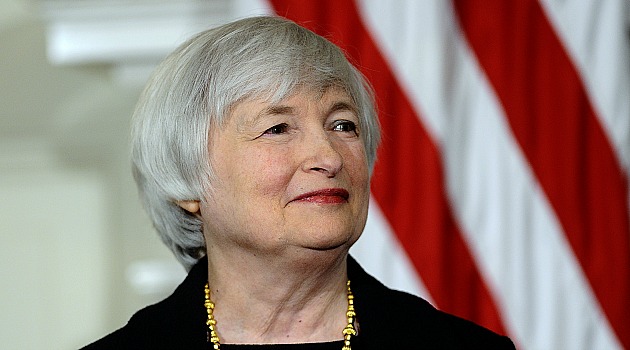
Janet Yellen is about to become the most powerful central banker in the world. At the end of January, she replaces Ben Bernanke as chair of the board of governors of the US Federal Reserve System, the first woman to head a major central bank.
She has been hailed by colleagues as ‘truly brilliant’, ‘the whole package’ and by outsiders as ‘perhaps the best-qualified Fed chairman in history’. She is also seen as one of the most dovish, pro-growth members of the Fed’s top echelons.
Dr Janet Yellen was born in Brooklyn, New York in 1946. Her father was a doctor and her mother a teacher. After a starry high-school career, she studied economics at Brown University. A PhD at Yale followed and a job at Harvard, where she taught a student called Larry Summers. Summers was the favourite for the next Fed chairmanship, but withdrew from the race in September after vociferous liberal opposition.
In 1977, Yellen arrived at the Federal Reserve, where she met and fell in love with economist George Akerlof. They married and left the USA to teach at the London School of Economics, collaborating on research. According to her husband, not only did their personalities mesh perfectly but “we have always been in all but perfect agreement about macro-economics”. They have a son, Robert, now an economist who teaches at Warwick University.
Friends and former colleagues describe her as a shy person, kind, but very serious.
In the 1980s, the couple moved to San Francisco to teach and in the mid-90s Yellen got a call from the Fed and was appointed a member of the board of governors. Her star was now firmly in the ascendant.
In 1997, President Bill Clinton asked her to chair his influential Council of Economic Advisers. Soon after her husband shared the Nobel Prize for Economics with Joseph Stiglitz.
By 2004 she was heading the San Francisco Fed; five years later she was voting on the interest rate-setting Federal Open Market Committee. To her credit, she did raise concerns about the frothy housing market in 2005, but failed to foresee the scale of the bust.
Yellen became number two to Ben Bernanke in 2010. As someone who wants to boost jobs as well as curb inflation, she helped him design new policies, which explicitly aimed to cut unemployment.
She is also one of the architects of the plan to create US$85 billion of new money every month, known as quantitative easing (QE), to stimulate the US economy. In December, Bernanke signalled that at last the gradual unwinding of this stimulus would begin with a reduction to $75 billion a month.
Now Yellen is about to take the baton from him. She faces the huge challenge of weaning the USA off its splurge of money-creation without causing panic. Last year, even the looming prospect of this ‘great unwind’ caused mayhem on world markets.
The concern within the USA was that as the stimulus tails off, interest rates might rise and choke off the recovery. The concern outside was that investment money would flood out of emerging markets and into North America in pursuit of higher returns.
Barack Obama said of Janet Yellen: “She’s tough – and not just because she’s from Brooklyn.”
Tough is what the new Fed boss needs to be.





